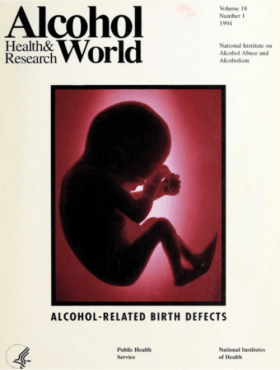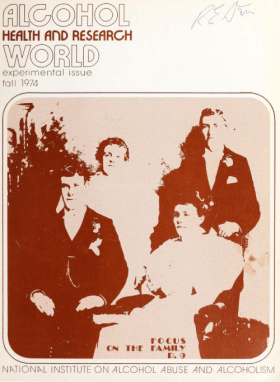In the 15 years since the founding of NIAAA, alcohol research has expanded and become increasingly sophisticated. With Volume 9, Number 3, the journal shifts from a “newsy focus” to a greater emphasis on detailed alcohol research findings.

In the 15 years since the founding of NIAAA, alcohol research has expanded and become increasingly sophisticated. With Volume 9, Number 3, the journal shifts from a “newsy focus” to a greater emphasis on detailed alcohol research findings.

The journal releases its first issue (Volume 22, Number 4) highlighting patterns of alcohol consumption and related problems among various racial and ethnic populations. This issue emphasized the importance of understanding and addressing alcohol-related issues among all Americans.

Shortly after the modernization of peer review took off in the 1970s, the journal establishes its Editorial Advisory Board (EAB) to review and provide guidance on the journal’s content. The EAB continues to be an integral part of the journal today.
In Volume 1, Number 3, the journal publishes its first article on what was then known as fetal alcohol syndrome (FAS), reflecting recent advances and descriptions of the harmful effects of prenatal alcohol exposure on the fetus.

With Volume 18, Number 1, the journal goes digital, putting full articles online after publication of the print issue, beginning its open-access policy where articles are available without any fees.

The journal becomes fully digital, forgoing printing and creating a continuous publication model. Each article is now published immediately online upon completion.

Building on 15 years of research into the effects of acute and chronic alcohol consumption in people living with HIV, the journal publishes an issue (Volume 33, Number 3) that reviews the mechanisms, prevention, and treatment of alcohol and HIV comorbidity.

The journal gains recognition by being ranked 1st among 38 journals in the “substance abuse” category of the Social Sciences Citation Index, a carefully selected and evaluated collection of journals that delivers to users the most influential scientific research information.

Just four years after the establishment of the National Institute on Alcohol Abuse and Alcoholism (NIAAA), the Institute publishes its first pilot issue of the journal, then named Alcohol Health and Research World, with a “newsy, magazine-type focus.” In 1976, the first official quarterly issue (Volume 1, Number 1) is then published.

With Volume 23, Number 1, the journal’s title and look is rebranded as Alcohol Research & Health following a poll of readers and members of the alcohol research field to rename the journal to more accurately reflect the current scope—now comprising peer-reviewed reviews of scientific research.
